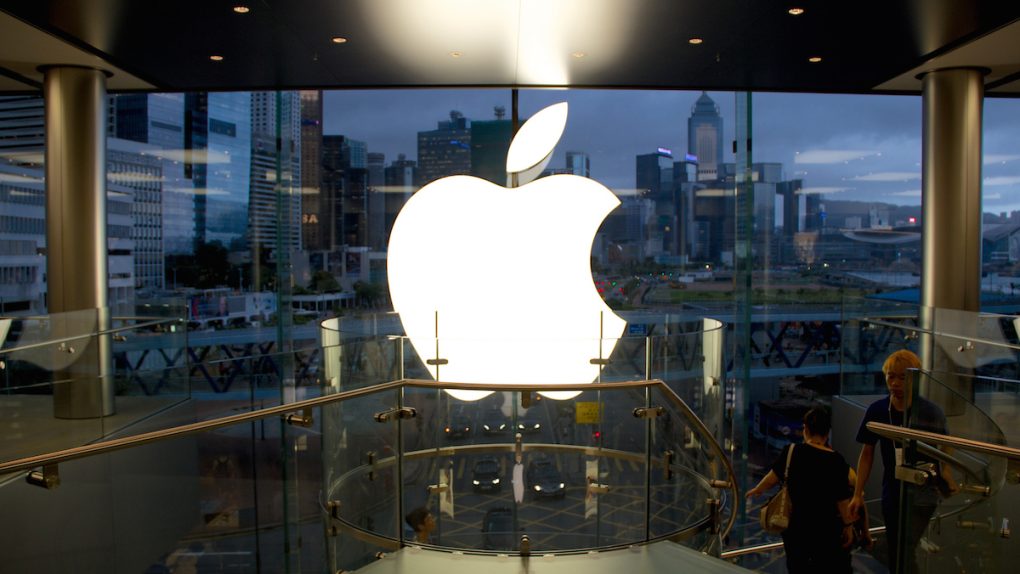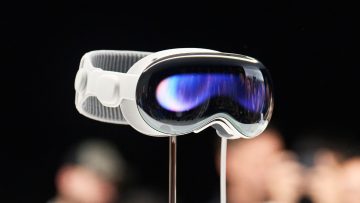Apple today is primarily known for the iPhone, but it’s easy to forget that the company has a long and storied product history that stretches back nearly four decades. In that timeframe, Apple has of course had more than its fair share of success with the Mac, the iPod, the iPhone and the iPad, but it’s also had a number of products that quickly became commercial failures.
While Apple’s product lineup today is relatively streamlined given its massive bank account, Apple’s history is nonetheless littered with examples of the company venturing out into new product categories and falling flat on its face, often with alarming and embarrassing immediacy.
DON’T MISS: Apple’s upcoming iPhones might change the game more than you can even imagine
Listed below are a group of products, which, not surprisingly, takes us on a journey through somewhat forgotten eras of Apple history that existed long before the iPhone was even in development. From an ill-fated gaming system to an overpriced and lackluster stereo system, Apple over the years has had its hand in just about everything.
With so many people being so quick to prematurely label the Apple Watch a disappointing flop, the products below exemplify what a real flop looks like.
Pippin
Long before Apple became the king of mobile gaming with iOS, the company tried its hand at a traditional video game console with the Pippin. Believe it or not, but Apple in 1995 actually released a gaming console. The Pippin also doubled as a network computer (it came with an old school 14.4 kbps modem), but it’s inability to gain traction with gamers ultimately resulted in it becoming a whopping commercial flop. Not helping matters was the fact that the Pippin was expensive ($559), shipped with a less than respectable processor and didn’t have a respectable ecosystem of games to keep it afloat. In fact, there were less than 20 titles available when the Pippin first launched.
It’s been estimated that Apple sold only about 40,000 units after an initial production run in the 100,000 range. Clearly, the Pippin was a seismic flop to say the least.
Newton
Released in 1993, the Newton was supposed to do for the PDA market what the iPhone ultimately did for the mobile market: Kickstart a mobile revolution. Sporting a sleek design, Apple’s line of Newton devices were packed with a number of interesting features, but the flagship feature – handwriting recognition – didn’t entirely work as well as advertised. In fact, its deficit in this regard was mocked widely in pop culture, both in a famous “Doonesbury” comic strip and on The Simpsons, two references which be seen below.
While later iterations of the Newton featured much-improved handwriting recognition, the device never managed to shake off the perception that it was a bust of a product. Apple’s Newton division was ultimately axed when Steve Jobs returned to the company in the late 90s. Interestingly, some have speculated that Jobs axed the division because he still harbored resentment for John Sculley, the Apple CEO who spearheaded the Newton and famously drove Jobs out of Apple. Looking back, the Newton was a device with lofty goals that was released before the requisite technology to support it became commonplace.
https://www.youtube.com/watch?v=Jas0bwDdEzs&spfreload=10
G4 Cube
The G4 Cube undoubtedly looked sleek, and it certainly garnered its share of favorable reviews, but tacking on a $1,599 sticker price for a computer without a display just didn’t cut it back in 2000 and 2001. Despite being on the receiving end of a number of awards, sales of the G4 Cube, which appropriately measured in at 8x8x8x inches all around, never got off the ground in a meaningful way.
https://www.youtube.com/watch?v=zNxu6CAmpZg
Twentieth Anniversary Mac
Always up for celebrating an anniversary, Apple in 1997 celebrated its 20th anniversary with a brand new computer appropriately named the Twentieth Anniversary Mac, or TAM for short. The computer, which was actually one of Jony Ive’s first projects at Apple, was pretty intriguing for its time. Whereas most CPUs back in the late 90s were decidedly clunky, Apple’s TAM featured a sleek and incredibly thin all-in-one design. The machine featured a vertically positioned CD-ROM drive, decent internals, and came with external Bose speakers.
But in what will fast become a theme in the other examples below, the Twentieth Anniversary Mac didn’t sell all that well because a) it was overpriced with a $7499 pricetag and b) the internals, which while decent, were completely underwhelming relative to the cost of the machine.
When sales didn’t explode right out of the gate, Apple quickly slashed the price down to $3,500. When that didn’t help kickstart sales, Apple cut the price even further, all the way down to $1,995. Alas, even that did nothing to inject any semblance of life into a decidedly unpopular yet intriguing product.
iPod Hi-Fi
The year was 2006. George W. Bush was President, and the entire world was still going iPod crazy. Looking to cash in even more from its exceedingly profitable iPod business, Apple 10 years ago released the iPod Hi-Fi, a stereo system that could play music directly from an individual’s iPod.
As Apple is prone to do, the iPod Hi-Fi was given a premium price. Only problem was that the actual stereo was far from a premium product. While the sound quality of the iPod Hi-Fi was certainly respectable, it was nowhere near what consumers and reviewers were expecting out of a $349 stereo system. Expectedly, audiophiles lambasted the device with glee.
So much like the Pippin, the iPod Hi-Fi was not worth anywhere near what Apple priced it at. Suffice it to say, the iPod Hi-Fi was a short-lived product that never racked up significant sales and was abruptly discontinued not even two years after its initial release.
iPhone 5c
Was the iPhone 5c a flop? It’s debatable. The device, to its credit, did outsell a number of BlackBerry and Windows smartphones, but it’s hard to dispute that the iPhone 5c, at the very least, underwhelmed and didn’t exactly perform as well as Apple would have hoped.
Even Tim Cook noted during a January 2014 earnings conference call that demand for the iPhone 5c “turned out to be different than we thought” and didn’t exactly align with Apple’s initial sales projects.
Launched alongside the iPhone 5s, there have been many theories attempting to explain what went wrong. While some believe the iPhone 5c was priced too high for a non-flagship device, others maintain that the pastel color options that accompanied the iPhone 5c inadvertently steered consumers towards the pricier but more feature-rich iPhone 5s.
Macintosh Portable
In 1989, Apple released the Macintosh Portable, the first mobile Mac to ever hit the scene. Weighing in at 16 pounds, the device was arguably portable only in name. The device is often a forgotten piece of Apple history as it was eventually re-designed and replaced by Apple’s revolutionary Powerbook series. Spec wise, the machine featured a black and white LCD screen, 1MB of RAM and ridiculously heavy lead acid batteries which accounted for the bulk of the machine’s heft.
Needless to say, the Macintosh Portable was far from a commercial success, in part due to a $6,500 pricetag which comes out to about $12,750 in 2016 dollars.
Macintosh TV
One of Apple’s long forgotten products is the Macintosh TV. Released in October of 1993, the Macintosh TV incorporated a cable ready TV tuner card into a Mac Performa. Aiming for a hybrid device may have made sense at the time, but the Macintosh TV was a failure all around. As a computer, the machine was nothing to write home about; and with an initial price tag of $2,097 ($3400 in 2016 dollars), the Macintosh TV – with its 14-inch CRT display – was far too expensive and limited for a TV.
Incredibly, though perhaps not surprisingly, the Macintosh TV was only on the market for about three and a half months before Apple got wise and pulled the plug.
iMac Hockey Puck Mouse
Originally touted as the best mouse you’ll ever use, the hockey puck shaped mouse Apple released alongside its iconic Bondi Blue iMac in 1998 was anything but. Though the mouse came standard on all Macs for a short couple of years, the device was widely derided, with some users categorizing it as incredibly frustrating and inefficient to use. Most notably, the product’s circular design made it somewhat clumsy to hold and maneuver.
The hockey puck mouse was ultimately replaced in 2000 with the optical Apple Pro Mouse.
Apple III
Released in 1981, the Apple III lasted for a few years on the market but never sold tremendously well. Without question, the machine never even come close to becoming the incredible hit that was the Apple II. Famously, some of the earlier models of the Apple III were plagued with an assortment of serious reliability issues, ultimately prompting Apple to issue a recall at one point. By the time a more robust version of the Apple III was available, it was too little too late. It’s believed that Apple only sold about 70,000 Apple III machines over a 4 year production run.
Lisa
If you thought Apple’s penchant for releasing overpriced hardware began in the early 90s, think again. Even back in 1983, Apple priced its Lisa computer at $9,995, the equivalent to about $24,200 in today’s dollars. As an actual computer, the Apple Lisa was incredibly forward-thinking as it came with a mouse, a user-friendly GUI display, and an operating system with multitasking support and protected memory.
Throughout its run, the Apple Lisa never sold particularly well and was eventually subsumed by Apple’s original Mac. Famously, Apple buried a good number of un-purchased Lisa computers in a Utah landfill as a tax write-off.
Honorable Mentions:
Motorola ROKR
Though technically a piece of Motorola hardware, the ROKR featured iTunes Music playback thanks to a licensing deal Motorola struck with Apple. Famously, the ROKR could only store 100 songs at a time. What’s more, transferring songs onto the phone itself was painfully slow. The good news is that the disappointment associated with the ROKR was one of the catalysts behind Apple’s decision to forge ahead with a smartphone of their own.
Interestingly, Motorola’s CEO at the time, Ed Zander, was furious that Apple released an iPod Nano alongside the launch of the ROKR, believing that it would adversely affect sales.
“Screw the nano,” Zander reportedly said. “What the hell does the nano do? Who listens to 1,000 songs? People are going to want devices that do more than just play music, something that can be seen in many other countries with more advanced mobile phone networks and savvy users”.
MobileMe
Okay, so this is software and not hardware, but MobileMe, the precursor to iCloud, had a less than stellar launch. In fact, Steve Jobs was so incensed at a negative review from Walt Mossberg that he reportedly told Apple engineers that they”tarnished Apple’s reputation” and that they “should hate each other for having let each other down.”
Reportedly, the team responsible for putting the original incarnation of MobileMe together was disbanded.
As a final point of interest, the failure of MobileMe helped Eddy Cue rise up through the ranks as he quickly assumed control over all of Apple’s Internet-related services as a result.








